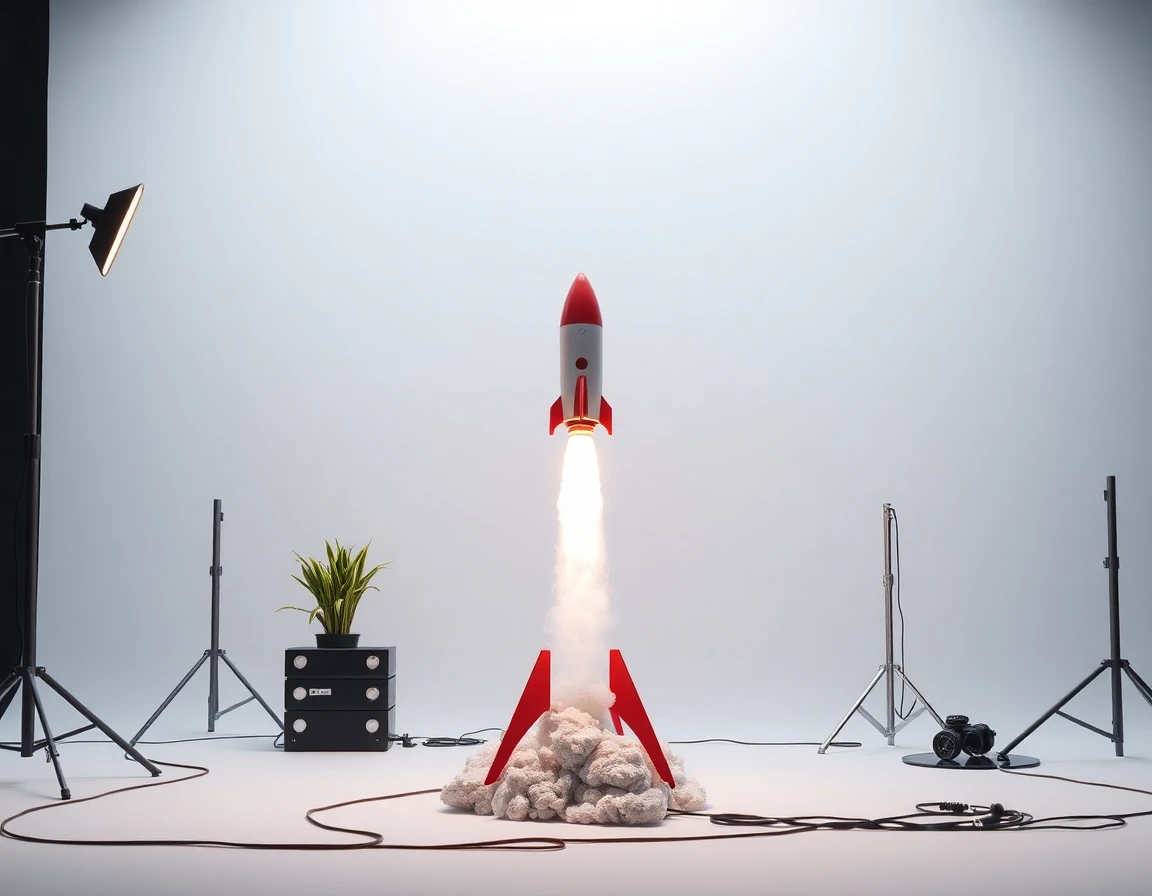Recent developments in the aerospace and defense sectors have marked significant milestones in rocket technology. With record-breaking launches and advancements in reusable rocket systems, these innovations are paving the way for a new era in space exploration.
SpaceX’s Starship: A Leap Toward Interplanetary Travel
On October 13, 2025, SpaceX achieved a landmark with the successful 11th test flight of its Starship rocket from Starbase, Texas. Standing at an impressive 403 feet (123 meters), the Starship is the largest and most powerful rocket ever constructed. During this flight, it traveled halfway around the globe, deploying eight mock satellites akin to those in the Starlink constellation.
The flight not only demonstrated enhanced maneuverability during re-entry but also included a booster that executed a controlled splashdown in the Gulf of Mexico. The spacecraft’s re-entry over the Indian Ocean, although not recovered, provided crucial data for future missions. As NASA lauded this accomplishment, it underscored the Starship’s potential in ferrying astronauts from lunar orbit to the surface of the Moon’s south pole, an essential step in human exploration of our celestial neighbor.
SpaceX is further strengthening its capabilities by upgrading its launch facilities at Cape Canaveral, allowing simultaneous operations for both the Starship and Falcon rocket systems. The transition to a fully reusable rocket system like the Starship is critical for reducing the cost of access to space, especially as plans for Mars colonization unfold.
Falcon 9: Setting the Standard for Reusability
Just days later, on October 19, 2025, SpaceX’s Falcon 9 rocket set a new record by completing its 31st flight. This launch, which successfully deployed 28 Starlink satellites into low Earth orbit (LEO), emphasizes the company’s strategy of extensive rocket reuse to minimize costs and maximize efficiency in satellite deployment. The Falcon 9, with its partially reusable design, has revolutionized how satellite constellations are constructed and maintained.
The Falcon 9’s remarkable achievement highlights its role in supporting not only commercial satellite operations but also international missions. This reliable rocket, with its proven track record, contrasts with the fully reusable Starship still under development, which aims to support more ambitious interplanetary endeavors.
China’s Gravity-1: A New Contender in Rocket Technology
Meanwhile, on October 10, 2025, China’s Orienspace successfully launched its Gravity-1 rocket for the second time from a ship in the Yellow Sea. The Gravity-1, recognized as the world’s most powerful solid-fuel rocket, boasts a height of 100 feet (30 meters) and features three stages complemented by four strap-on solid boosters. This rocket successfully deployed one wide-field satellite and two experimental spacecraft into their intended orbits, demonstrating its formidable payload capabilities.
The upcoming Gravity-2 and Gravity-3 rockets promise to further enhance capabilities with a mix of liquid and solid propulsion systems designed to lift up to 25.6 tons to LEO. This ambitious initiative reflects China’s growing footprint in the aerospace sector and its commitment to advancing rocket technology.
Technological Innovations Driving Performance
The ongoing evolution of rocket technology is underscored by significant advancements in navigation systems and sensors. For instance, the integration of high-performance MEMS accelerometers in advanced navigation systems is crucial for the precise maneuvering required during launch and re-entry. These precision accelerometers provide superior stability and accuracy, enhancing the performance of rockets like the Falcon 9 and Starship.
Additionally, the Advanced Sensor Module, featuring a 9-DOF MEMS IMU, integrates three-axis gyroscopes, accelerometers, and magnetic sensors. This module enhances motion sensing capabilities, which are vital for the controlled flight paths of modern rockets.
Conclusion
The aerospace industry is witnessing a transformative period, marked by groundbreaking advancements in rocket technology. SpaceX’s ongoing success with the Starship and Falcon 9, coupled with China’s innovative Gravity-1 rocket, reflects a global shift toward more sustainable and efficient space exploration.
As these technologies continue to evolve, the potential for human exploration of Mars and beyond becomes increasingly tangible. The advancements in reusable rocket systems, high-precision navigation technologies, and robust payload capacities are laying the groundwork for the next generation of space travel, promising exciting developments in the years to come. The race is on, and the future of space exploration has never looked brighter.
References
-
Month: October 2025 (spaceflightnow.com) - 10/20/2025 Month: October 2025 · Orion spacecraft arrives at VAB ahead of stacking for Artemis 2 · SpaceX sends 28 Starlink satellites to low Earth orbit in predawn launch.
-
SpaceX launches Starlink satellites to orbit on Falcon 9 rocket’s record-breaking 31st flight (video) (www.space.com) - 10/19/2025 A SpaceX Falcon 9 rocket set a new reuse record today (Oct. 19) on a Starlink satellite launch, flying for the 31st time.
-
See photos of SpaceX Falcon 9 rocket liftoff Oct. 19 from Cape Canaveral Space Force Station (www.floridatoday.com) - 10/19/2025 The Falcon 9 took flight at 1:39 p.m. Sunday, Oct. 19, from Launch Complex 40 en route to deploying 28 Starlink internet satellites into low- …
-
Watch the 2nd-ever launch of China’s record-breaking Gravity-1 rocket (video) (www.space.com) - 10/17/2025 Gravity-1, the world’s most powerful solid-fuel rocket, launched from the deck of a ship on Oct. 10, 2025. Comments (0) ( 3 ).
-
SpaceX launches the 11th test flight of its mega Starship rocket with … (phys.org) - 10/14/2025 SpaceX’s mega rocket Starship makes a test flight from Starbase, Texas, Monday, Oct. 13, 2025. Credit: AP Photo/Eric Gay.
-
SpaceX launches its massive rocket Starship’s 11th test flight (www.youtube.com) - 10/14/2025 Connect with CNBC News Online Get the latest news: http … SpaceX launches its massive rocket Starship’s 11th test flight — 10/13/2025.



